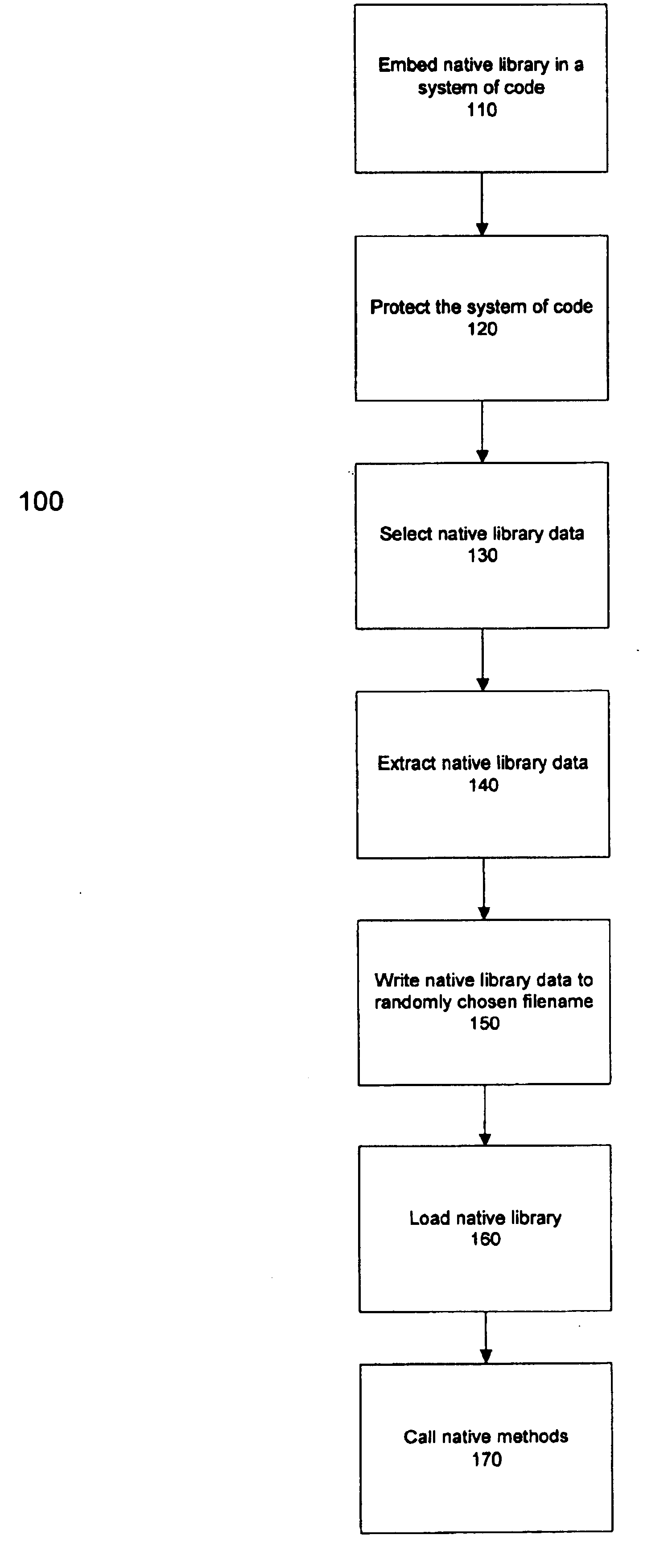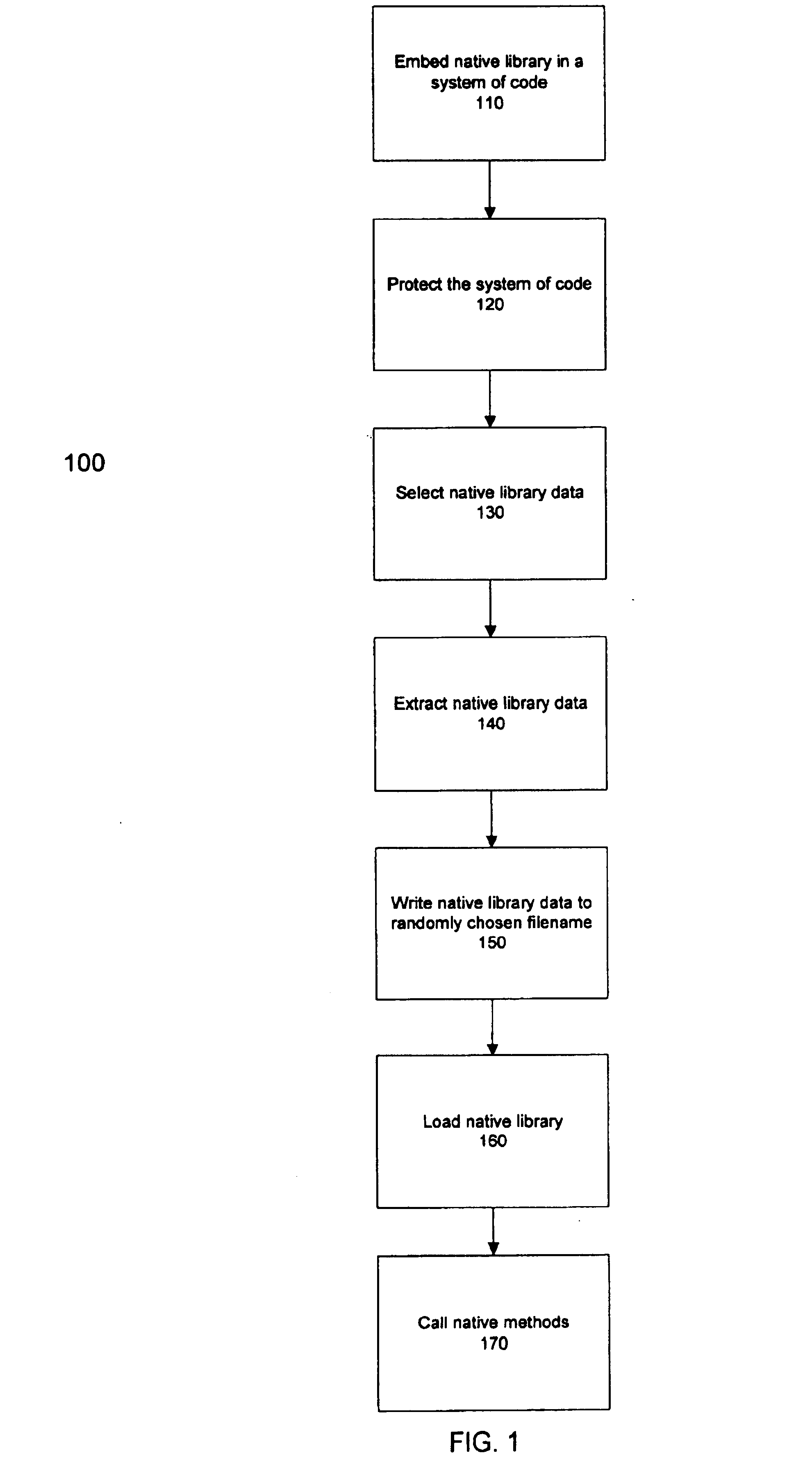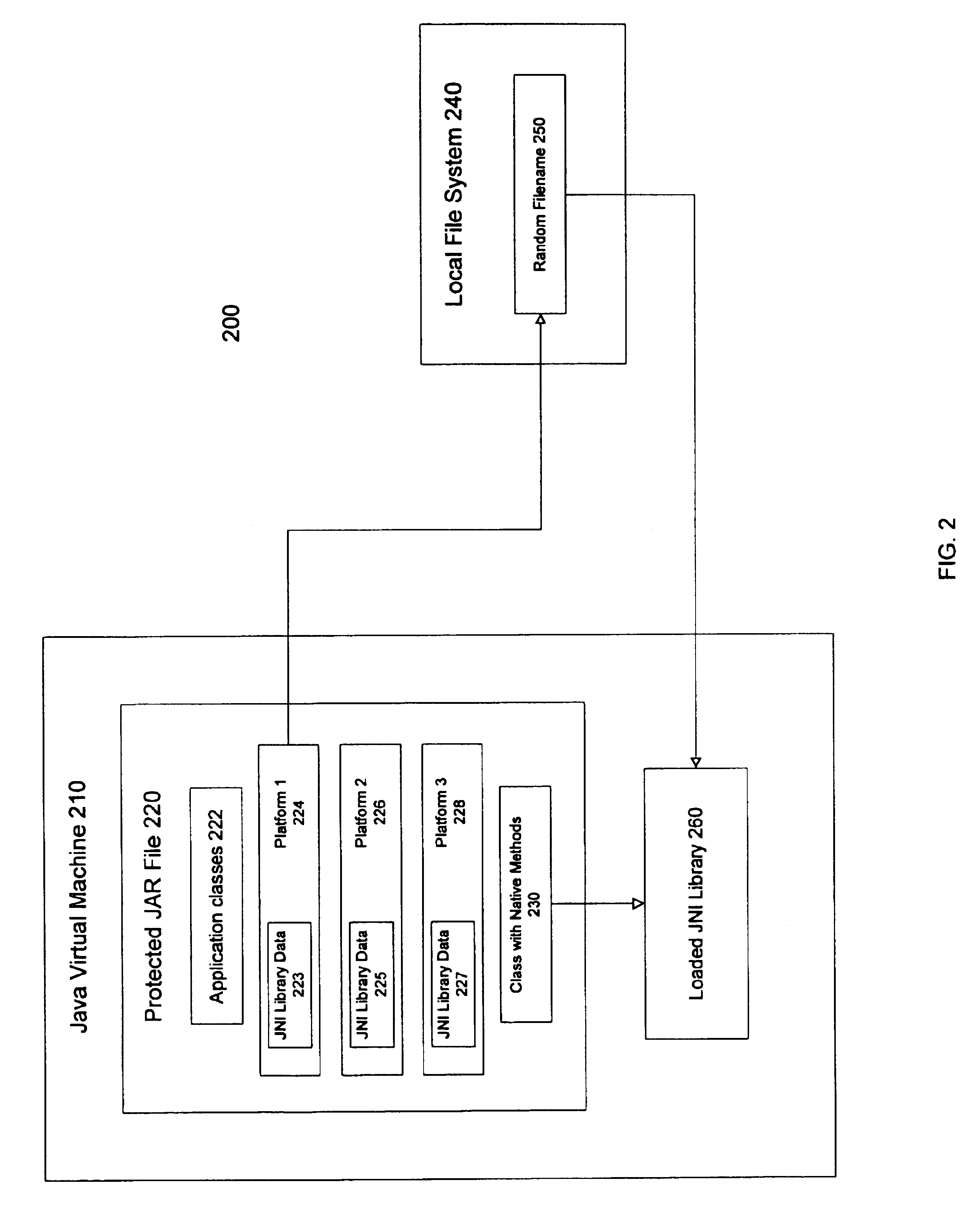Method and system for protecting native libraries
a library and library technology, applied in the field of native library protection, can solve the problems of difficult reverse engineering, easy to be compromised, and all applications that use the library, whether protected or not, to be compromised
- Summary
- Abstract
- Description
- Claims
- Application Information
AI Technical Summary
Benefits of technology
Problems solved by technology
Method used
Image
Examples
Embodiment Construction
The present invention provides a method and system for protecting one or more native libraries by embedding the native library in a system of code or scripting language and protecting system of code or scripting language by using a protection mechanism. Prior to the invocation of the native library, the native library is extracted from the system of code. The process of extraction may include selecting data associated with the native library, extracting the data, and writing the data to a randomly selected filename. The native library may then be loaded to an environment to enable implementation of native methods associated with the native library.
FIG. 1 illustrates a flowchart 100 for implementing the present invention. In step 110, the native library may be embedded in a system of code or scripting language. The system of code may then be protected by various methods to maintain security, in step 120. Such manners of protection may include methods of providing protection to the sy...
PUM
 Login to View More
Login to View More Abstract
Description
Claims
Application Information
 Login to View More
Login to View More - R&D
- Intellectual Property
- Life Sciences
- Materials
- Tech Scout
- Unparalleled Data Quality
- Higher Quality Content
- 60% Fewer Hallucinations
Browse by: Latest US Patents, China's latest patents, Technical Efficacy Thesaurus, Application Domain, Technology Topic, Popular Technical Reports.
© 2025 PatSnap. All rights reserved.Legal|Privacy policy|Modern Slavery Act Transparency Statement|Sitemap|About US| Contact US: help@patsnap.com



